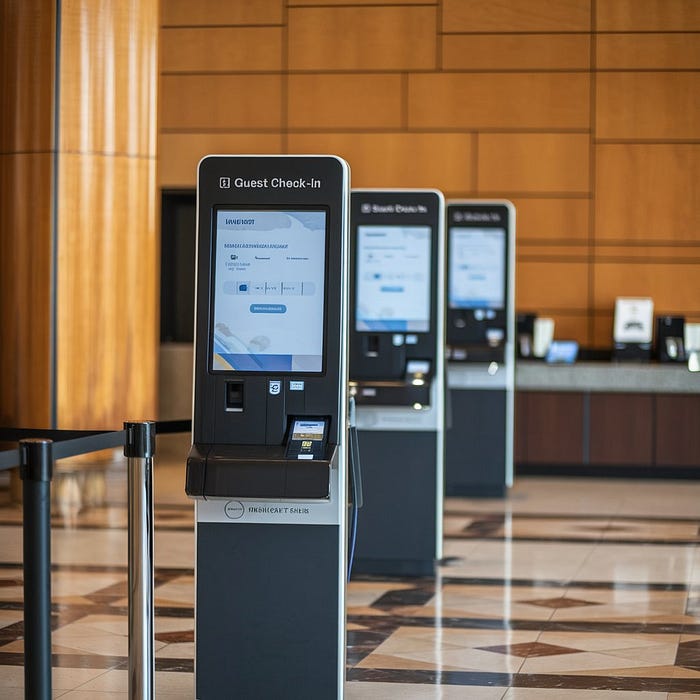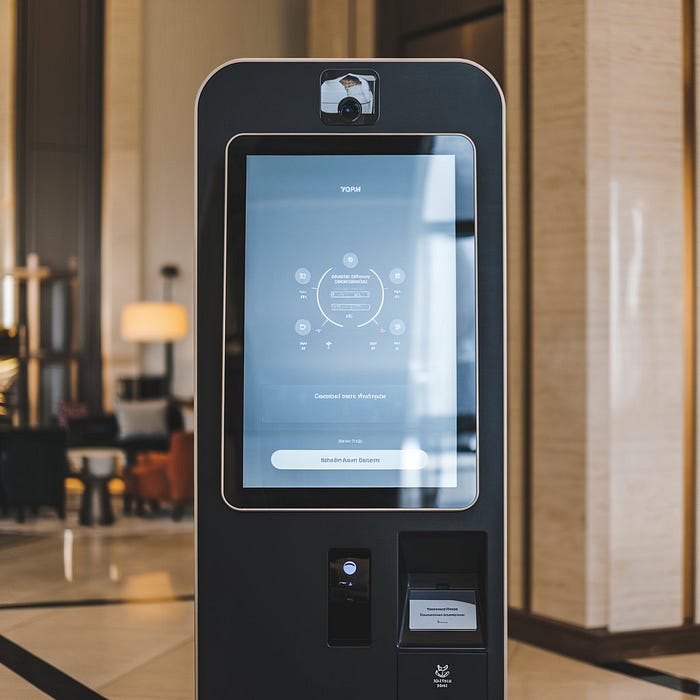Automated Guest Check-in: How Kiosk Machines Improve Security in Gated Communities

In today’s rapidly evolving digital landscape, gated communities are increasingly turning to smart technology to improve security and operational efficiency. One of the most transformative innovations in this space is the automated guest check-in kiosk. These kiosks are revolutionizing how visitors are managed, ensuring a seamless, secure, and user-friendly process. As the demand for convenience and heightened security grows, the adoption of automated guest check-in kiosks is becoming a common trend across residential complexes, luxury apartments, and private housing communities.
Understanding Automated Guest Check-in Kiosk Machines
Automated guest check-in kiosk machines are self-service devices designed to streamline and secure the process of visitor management in gated communities. These kiosks replace traditional manual registers or guards noting down visitor information, thereby minimizing human error and enhancing accuracy.
Key Features of Automated Check-in Kiosks
- Identity Verification: Visitors can scan their government-issued ID, passport, or other valid identification documents. Some kiosks are equipped with biometric scanners for facial recognition or fingerprint matching to confirm the visitor’s identity.
- Real-time Visitor Logging: The system records the time of entry and exit, stores guest details, and maintains digital logs accessible to community administrators and security personnel.
- Integration with Security Systems: Kiosks can be linked with CCTV cameras, access control systems, and mobile applications to offer a comprehensive security solution.
- Notification Capabilities: Once a visitor checks in, the resident receives an instant notification on their mobile app, allowing them to approve or deny entry.
Technology Behind the Kiosks
- Biometric Scanners: These offer high-level identity verification using facial recognition or fingerprint scanning.
- RFID: Residents may use RFID tags to allow frequent guests seamless entry, reducing manual interaction.
- QR Code Systems: One-time QR codes can be generated for guests, which they scan at the kiosk for quick entry.
- Cloud-based Data Management: All data captured is securely stored in the cloud, allowing real-time access, analytics, and backup while ensuring compliance with data protection regulations.
Enhancing Security with Automated Guest Check-in
Automated kiosks enhance the security framework of gated communities in ways that traditional systems simply cannot match. By eliminating manual entry, they reduce potential vulnerabilities and significantly boost the accuracy and accountability of guest management.
Accurate Visitor Verification and Identification
Using biometric verification and government-issued IDs, kiosks drastically reduce the chances of identity fraud. The automated process eliminates handwriting inconsistencies, fake ID approvals, and undocumented entries, offering a foolproof verification mechanism.
Real-time Visitor Tracking and Alerts
Security personnel and residents benefit from real-time tracking of who enters and exits the community. Any suspicious activity or unauthorized access attempt can trigger instant alerts, allowing for quick interventions and better situational awareness.
Data Security and Privacy Considerations
Automated kiosks come with robust encryption protocols and secure data handling practices. They comply with national data privacy laws like the GDPR or India’s PDP Bill, ensuring that residents’ and guests’ information remains protected. Regular audits and access controls further enhance data integrity.

Operational Benefits for Gated Communities
Beyond security, automated check-in kiosks bring substantial operational advantages that help streamline visitor management, optimize resource allocation, and improve the overall experience for residents and guests.
Reducing Waiting Times and Bottlenecks
During peak hours or large events, traditional check-ins can lead to long queues and delays. Automated kiosks handle multiple check-ins simultaneously and complete the process within seconds, reducing congestion at entry points.
Lowering Operational Costs and Increasing Efficiency
With fewer manned security checkpoints required, communities can reduce labor costs without compromising security. Staff can be redeployed to more strategic tasks while the kiosk machine handles routine visitor verifications efficiently.
Improving Resident Confidence and Satisfaction
Knowing that only verified guests can enter the premises instills a greater sense of safety among residents. The speed and transparency of the process also enhance their satisfaction, making them more likely to support and promote such technological upgrades.
Integrating Kiosks with Comprehensive Security Systems
Automated guest check-in kiosks are not standalone solutions — they are designed to work in tandem with other security infrastructure to provide a holistic safety net for gated communities.
Seamless Communication Between Systems
Modern kiosks can integrate seamlessly with:
- CCTV Systems: Capturing visitor images or videos during check-in for further verification.
- Access Control Mechanisms: Such as smart gates or boom barriers that open only after verification is complete.
- Mobile Security Apps: Residents receive alerts, approve guests, and view visitor logs right from their smartphones.
- Centralized Control Rooms: Where security teams can monitor all entries, view logs, and respond in real-time.
Automated Incident Reporting and Management
If an unauthorized person attempts entry or suspicious activity is detected, the system can automatically generate incident reports. These reports include visitor details, images, and timestamps, and are instantly shared with security personnel for further action.
Challenges and Best Practices for Implementing Automated Check-in Kiosks
While the benefits are considerable, deploying automated check-in kiosks comes with its own set of challenges. However, with the right approach, these can be effectively managed.
User Adoption and Training
Residents and guests may initially be unfamiliar with how the kiosks work. Communities should conduct orientation sessions, provide instructional signage, and offer user-friendly interfaces to make the transition smooth.
Maintenance and Technical Support
Like any technology, kiosks require regular maintenance to function optimally. Partnering with reliable vendors who offer ongoing technical support and system updates is crucial to avoid downtime.
Customizing Kiosk Solutions to Community Needs
Every community is unique. Some may require multilingual interfaces, while others might need additional security layers like OTP verification. A one-size-fits-all approach rarely works — customization is key to maximizing efficiency and user satisfaction.
Conclusion
Automated guest check-in kiosks are reshaping how gated communities manage security and visitor interactions. By leveraging advanced technologies such as biometrics, cloud systems, and real-time integrations, these kiosks offer unparalleled accuracy, convenience, and peace of mind. They not only tighten security but also streamline operations and improve the resident experience. As more communities embrace digital transformation, investing in automated guest check-in systems emerges as a strategic and future-ready choice for modern, secure, and efficient living environments.
Comments
Post a Comment